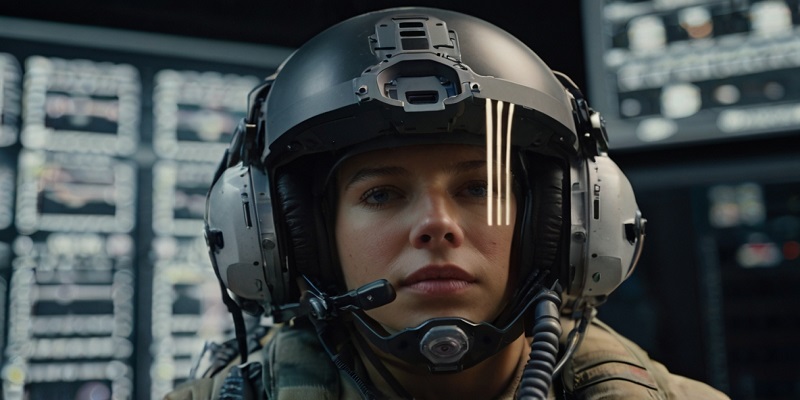Next-Gen Pilot Helmets: Integrating AR and VR for Enhanced Flight Control

Aviation has always been at the forefront of technological advancement. From the invention of the airplane to modern-day jets, the quest for improved flight control and safety continues. The latest leap in this journey involves the integration of Augmented Reality (AR) and Virtual Reality (VR) into pilot helmets. These next-gen helmets promise to revolutionize flight control, offering enhanced situational awareness and operational efficiency. In this article, we explore how AR and VR technologies are transforming pilot helmets and what this means for the future of aviation.
The Evolution of Pilot Helmets
Pilot helmets have come a long way from their early days. Initially, they served primarily as protective gear, shielding pilots from head injuries during turbulent flights or crashes. Over time, helmets evolved to include communication systems, enabling pilots to stay in constant contact with their teams. The integration of Heads-Up Displays (HUDs) marked another significant milestone, allowing pilots to access crucial flight data without diverting their gaze from the sky.
From HUDs to AR and VR
While HUDs have significantly improved flight safety and efficiency, they have limitations. Traditional HUDs project information onto a transparent screen in front of the pilot, but this can clutter the pilot’s view and provide limited interaction. This is where AR and VR technologies come into play. By overlaying digital information directly onto the pilot’s field of vision or immersing them in a virtual environment, AR and VR offer a more intuitive and interactive way to access and manipulate flight data.
Understanding AR and VR in Aviation
What is Augmented Reality (AR)?
Augmented Reality (AR) enhances the real-world environment with digital overlays. In the context of pilot helmets, AR can project navigational aids, flight data, and even real-time weather updates directly onto the visor. This allows pilots to access critical information without looking away from their surroundings. AR also enables the identification of potential hazards and obstacles, improving situational awareness and response time.
What is Virtual Reality (VR)?
Virtual Reality (VR), on the other hand, creates a completely immersive digital environment. For pilots, VR can be used for training purposes, simulating various flight scenarios in a controlled setting. This technology allows pilots to practice complex maneuvers, emergency procedures, and familiarization with different aircraft types without the risks associated with real-world training.
The Benefits of Integrating AR and VR into Pilot Helmets
Enhanced Situational Awareness
One of the primary benefits of AR and VR in pilot helmets is enhanced situational awareness. With AR, pilots receive real-time data overlays that highlight essential information such as altitude, speed, and heading. This reduces the need to scan multiple instruments, allowing for a more focused and informed flight experience. VR training further complements this by preparing pilots to handle various scenarios, ensuring they are well-equipped to make quick, informed decisions in the cockpit.
Improved Training and Simulation
VR technology offers unparalleled opportunities for pilot training. Traditional flight simulators are expensive and can be limited in scope. VR, however, can replicate any flight scenario, from takeoff to landing, in various weather conditions and emergency situations. This level of immersive training helps pilots build muscle memory and confidence, ultimately leading to safer and more efficient flight operations.
Real-Time Data Integration
AR-enabled helmets can integrate data from multiple sources, including onboard sensors, air traffic control, and weather services. This real-time data integration ensures pilots have access to the most current information, enhancing their ability to navigate and respond to changing conditions. For example, if a storm is detected along the flight path, AR can provide alternative routes and notify the pilot immediately.
Increased Safety
Safety is paramount in aviation, and the integration of AR and VR into pilot helmets significantly enhances it. AR can highlight potential hazards, such as other aircraft, terrain obstacles, and restricted airspace, allowing pilots to take proactive measures to avoid collisions. VR training ensures pilots are well-prepared to handle emergencies, reducing the likelihood of accidents caused by human error.
Challenges and Considerations
Technological Limitations
While the potential of AR and VR in aviation is immense, there are still technological limitations to overcome. The hardware required for AR and VR integration must be lightweight and comfortable for long flights. Additionally, ensuring the accuracy and reliability of the displayed information is crucial, as any errors could lead to catastrophic consequences.
Cost and Accessibility
The development and implementation of AR and VR technologies are expensive. This cost can be a barrier for many airlines, particularly smaller carriers with limited budgets. However, as technology advances and becomes more widespread, costs are expected to decrease, making these innovations more accessible to a broader range of operators.
Regulatory Approval
Aviation is a heavily regulated industry, and any new technology must undergo rigorous testing and approval processes. Ensuring that AR and VR systems meet the stringent safety and performance standards set by aviation authorities is essential. This process can be time-consuming and may delay the widespread adoption of these technologies.
The Future of AR and VR in Aviation
Ongoing Research and Development
Research and development in AR and VR for aviation are ongoing, with numerous companies and organizations exploring innovative applications. Continuous improvements in hardware, software, and data integration are expected to overcome current limitations, paving the way for more advanced and reliable systems.
Potential Applications Beyond Pilots
While this article focuses on pilot helmets, the potential applications of AR and VR in aviation extend beyond the cockpit. Ground crew, air traffic controllers, and maintenance teams can also benefit from these technologies. For instance, AR can assist ground crew in efficiently managing airport operations, while VR can be used to train maintenance personnel on complex repair procedures.
Integration with Other Emerging Technologies
The integration of AR and VR with other emerging technologies, such as artificial intelligence (AI) and the Internet of Things (IoT), holds great promise. AI can analyze vast amounts of data and provide predictive insights, while IoT can connect various systems and sensors to create a cohesive and responsive aviation ecosystem. Combining these technologies with AR and VR can lead to even greater advancements in flight safety and efficiency.
Conclusion
The integration of AR and VR into next-gen pilot helmets represents a significant leap forward in aviation technology. By enhancing situational awareness, improving training, and increasing safety, these technologies have the potential to transform the way pilots operate and interact with their aircraft. While there are challenges to overcome, the ongoing research and development in this field promise a future where AR and VR are integral components of aviation. As these technologies continue to evolve, the sky is truly the limit for their applications and impact on the aviation industry.





